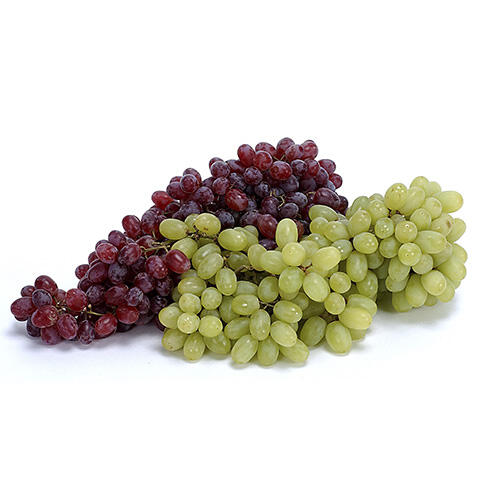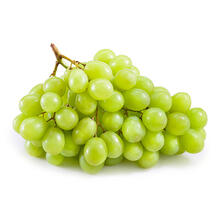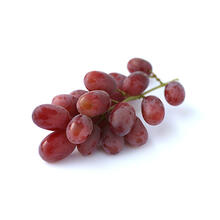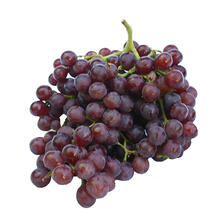You are here
Grapes, Seedless, Value

Markon Essentials (ESS) Seedless Grapes are ideal when external appearance is not important, but value, flavor, quality, food safety, sustainability, and consistency are.

Product Details
Shelf Life:
Julian pack date.
Storage Temperature:
34°-36°F (1°-2°C)
Ethylene Producing:
Yes
Ethylene Sensitive:
Yes
Kosher:
No
Available Offerings from Markon for Grapes, Seedless, Value
| Description | Net Weight | Pack | GTIN | UPC |
|---|---|---|---|---|
| Grapes, Green Seedless, Value | 19 pounds or 9 kilograms | 19 LB | 2 06 11628 91807 9 | 6 11628 91807 5 |
| Grapes, Red Seedless, Value | 19 pounds or 9 kilograms | 19 LB | 2 06 11628 91804 8 | 6 11628 91804 4 |
| pounds or kilograms | ||||
| pounds or kilograms |
Storage Tips:
Refrigerate unwashed at high humidity.
Handling Tips:
Keep away from ethylene gas-producing items (apples, avocados, cantaloupe, tree fruit, and tomatoes). Rinse whole fruits and vegetables in clean running water prior to using.
General Usage Ideas
- Toss with berries, melons, and oranges; serve with Greek yogurt for a healthy breakfast
- Thread whole grapes and pieces of chicken on skewers; marinate in lemon juice, olive oil, garlic, and oregano; grill until chicken is cooked
- Roast grapes with rosemary sprigs and a pinch of salt; serve on crostini with cheeses such as chevre, Brie, or Ricotta
Fall / Winter Usage Ideas:
- Toss RSS Chopped Romaine, RSS Celery Sticks, ESS Seedless Grapes, and hazelnuts with roasted onion vinaigrette
- Sauté RSS Stuffing Starter and fresh thyme; add wild rice and vegetable stock; simmer until rice is tender; stir in roasted ESS Seedless Grapes, walnuts, and the zest of MFC Oranges
Spring / Summer Usage Ideas:
- Drop grapes, apples, nectarines, and pineapple chunks into sangria, lemonade, and iced tea
- Add chopped or whole grapes to creamy mayonnaise-based salads like chicken or turkey
Did You Know?
Growing Season: Dec-Apr = Chile; May-Nov = California. According to the "Food and Agriculture Organization" (FAO), 75,866 square kilometers of the world is dedicated to grapes. Approximately 71% of world grape production is used for wine, 27% as fresh fruit, and 2% as dried fruit.





